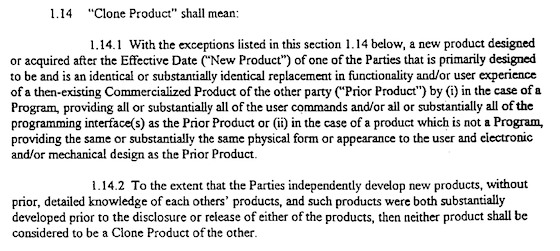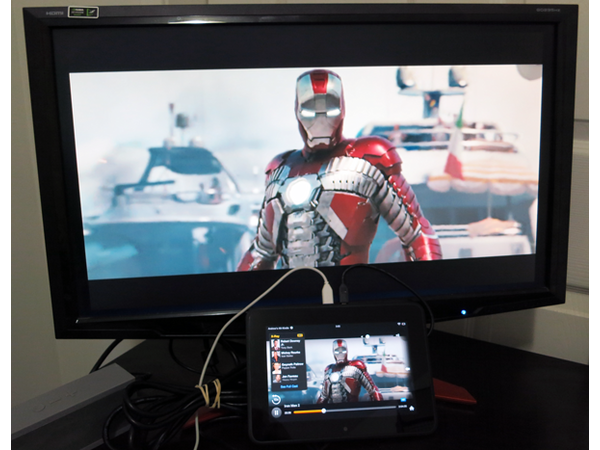What Surface Pro Clones Mean For Microsoft Corporation (MSFT)
Post on: 16 Март, 2015 No Comment

Jide — a start-up founded by several former Google ( NASDAQ: GOOG ) ( NASDAQ: GOOGL ) engineers — recently unveiled its first product, the Android-powered Ultra Tablet at CES 2015.
Tablets are a dime a dozen these days, but Jide’s Ultra Tablet turns heads for two reasons. First, it looks just like Microsoft ‘s ( NASDAQ: MSFT ) Surface Pro 3, with a similar 11.6 screen, kickstand, and type cover. Second, it runs Remix OS, a customized version of Android which looks a lot like Windows with a taskbar and resizable windows for running apps.
Jide’s Ultra Tablet. Source: Jide.
Jide’s Ultra Tablet isn’t the first clone of the Surface Pro. Back in 2013, a Chinese company called HKC launched a Surface clone which ran Windows 8. Hewlett-Packard ‘s ( NYSE: HPQ ) new Windows-powered Envy x2, which launched last year, also sports a Surface-like kickstand and type cover.
Surface clones might seem like bad news for Microsoft, which is often criticized for racking up losses on hardware businesses like the Surface, Xbox, and Windows Phone. But in my opinion, the appearance of Surface clones is actually a strong vote of confidence for Microsoft’s tablet efforts.
Innovators and followers
The tech industry is comprised of innovators and followers. By launching the iPhone in 2007 and the iPad in 2010, Apple ( NASDAQ: AAPL ) secured its position as a mobile innovator. Other companies fell in line as followers by mimicking and tweaking Apple’s core designs.
A market that Apple leapfrogged over, however, was the 2-in-1 device segment which bridged the gap between laptops and tablets. In 2011, Asus tried to bridge that gap with the Eee Pad Transformer, a tablet which could be converted into a laptop via a docking station. Unfortunately, its usefulness was ultimately limited by Android’s paltry library of productivity software and a lack of backwards compatibility with Windows devices.
Bridging the gap
Microsoft’s first-gen Surface, launched in 2012, was hobbled by the same problem as the Transformer because it only ran Windows RT — an ARM-based OS which wasn’t compatible with x86-based Windows software. Microsoft launched the Surface Pro the following year, which included the full version of Windows 8.1. That upgrade finally made the Surface Pro a viable replacement for aging desktop and laptop PCs.
However, Microsoft didn’t quite get the design right until the Surface Pro 3, which weighed less than Apple’s featherweight MacBook Air. The Surface Pro 3’s wide price range ($799 to $1,949) and an optional docking station ($200) also made it a popular choice among enterprise customers — which helped Surface sales more than double both year-over-year and sequentially last quarter.
By comparison, sales of Apple’s iPads fell year-over-year for three consecutive quarters. Suddenly, the Surface’s kickstand, type cover, and stylus were considered innovative, while the iPad’s widely imitated design wasn’t.
Microsoft’s Surface Pro 3. Source: Microsoft.

More productive tablets
The appearance of Jide’s Ultra Tablet indicates that there is a market for more productivity-focused Android tablets. HP previously launched its own Android laptops — the Slatebook series — but they were poorly received because too many apps were optimized for vertical touch screens. Google is bridging the gap between tablets and laptops by porting Android apps to Chromebooks, but that plan is still in the early stages.
Meanwhile, recent rumors claim that Apple’s iPad Pro will have a 12.9 screen and come with a stylus. If those stories are true, it means that Apple is actually following in Microsoft’s footsteps by transforming the iPad from a media consumption device into a productivity one like the Surface.
Google and Apple might be taking baby steps in turning their tablets into productivity devices, but given the choice between an Android tablet, an iPad, or a Surface Pro for work purposes, many people will arguably still buy the Surface Pro, due to its backwards compatibility with older Windows PCs.
The future
If Windows 2-in-1 devices replace more Windows laptops and desktops, Microsoft might not need to even manufacture Surface devices anymore. Instead, it could license the brand to a hardware partner and reap the Windows license revenue. When that happens, the Surface’s original mission — to prevent the Windows PC market from being overtaken by tablets — will be accomplished.
Apple Watch revealed: The real winner is inside
Apple recently revealed the product of its secret-development dream team — Apple Watch. The secret is out, and some early viewers are claiming its everyday impact could trump the iPod, iPhone, and the iPad. In fact, ABI Research predicts 485 million of this type of device will be sold per year. But one small company makes Apple’s gadget possible.And its stock price could have nearly unlimited room to run for early in-the-know investors. To be one of them, and see where the opportunity for real money is to be made, just click here !














